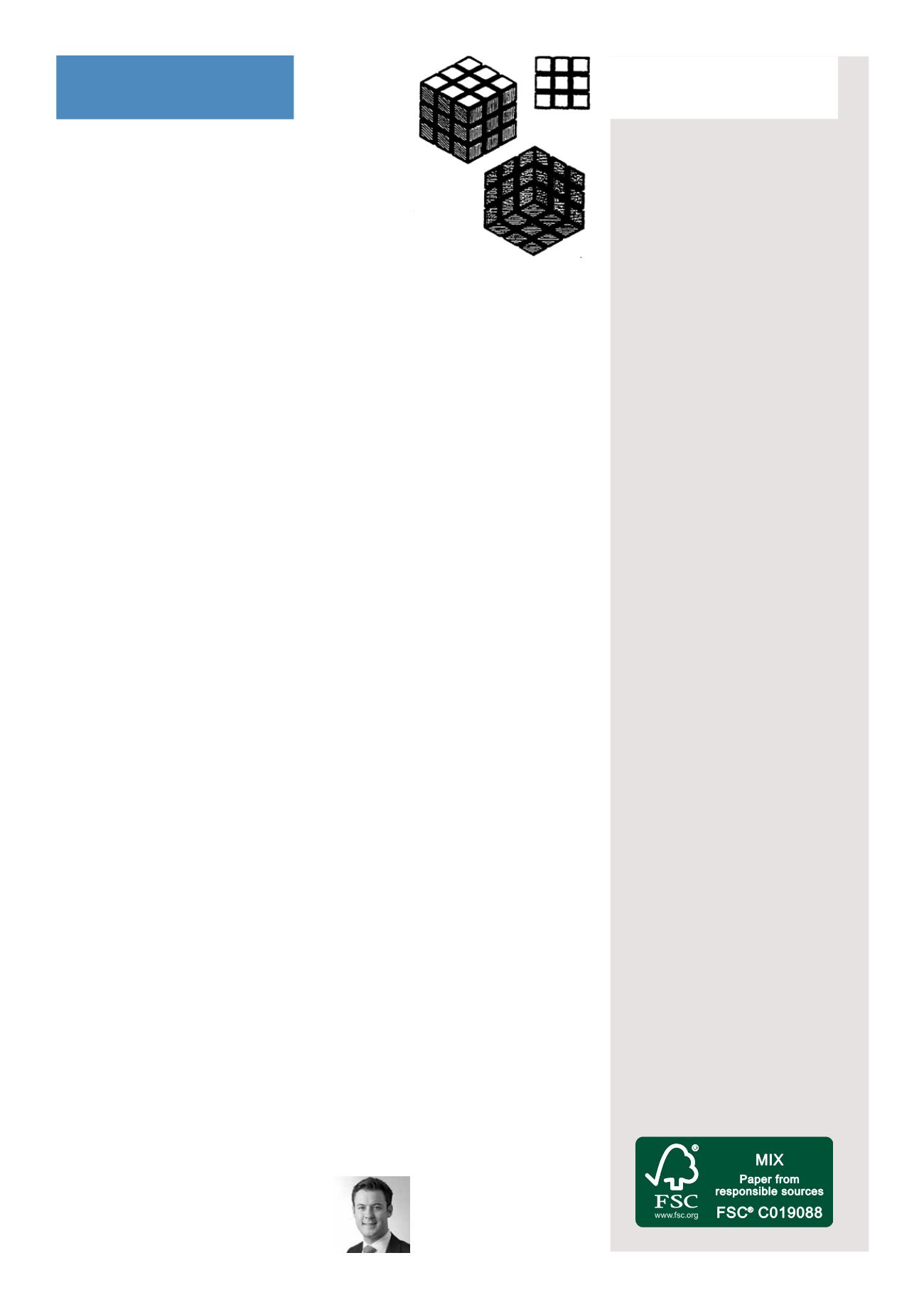
London:
4 More London Riverside
London SE1 2AU
United Kingdom
Tel: +44 20 7940 3600
Fax: +44 20 7378 9680
Bristol:
1 Redcliff Street
Bristol BS1 6NP
United Kingdom
Tel: +44 117 925 3030
Fax: +44 117 925 3530
Leamington Spa:
Nicholas Wilson House
Dormer Place
Leamington Spa
Warwickshire CV32 5AE
United Kingdom
Tel: +44 1926 310700
Fax: +44 1926 335519
Sheffield:
Derwent House
150 Arundel Gate
Sheffield S1 2FN
United Kingdom
Tel: +44 114 273 3400
Fax: +44 114 275 5788
Munich:
Steinerstr. 15 / building
Gewerbegebiet Mittersendling
81369 Munich
Germany
Tel: +49 89 502224 020
Contact Us
In a recent decision of the Court of Justice of the European Union
(CJEU) the European Union trade mark registration for the famous
Rubik’s Cube was declared invalid. This marks the end of a 10 year
tussle over the registrability as a trade mark of the world’s best-
selling toy of all time.
The trade mark in question is Seven
Towns Ltd’s 3D trade mark (depicted
above) for “three dimensional puzzles”.
This was first registered as an EU trade
mark on 1 April 1996.
In 2006, a German toy manufacturer,
Simba Toys GmbH & Co. KG, applied to
invalidate Seven Towns’ registration, on
the basis that the trade mark is a shape
which is “necessary to obtain a technical
result”, i.e. that the internal rotating
capability of the cube is a functional
element that should not be protected by
trade mark law.
An important principle that is applied
when assessing 3D shape trade marks is
that registered trade marks should not
grant a monopoly for technical solutions.
That is the preserve of patents.
An earlier decision of the General Court
(GC) had upheld the validity of the Rubik’s
Cube mark. The GC had taken the view
that inferring the existence of an internal
rotating mechanism from the graphical
representations of that mark would not
have been appropriate, particularly due to
a lack of sufficient certainty. In other words,
the graphical representations of the trade
mark did not provide a direct indication
that the cube was capable of rotation due
to its internal constituent parts.
With this in mind, the CJEU affirmed
that “the essential characteristics of a
shape must be assessed in the light
of the technical function of the actual
goods concerned”. Unlike the GC’s
consideration that the assessment must
be made objectively, the CJEU directed
the assessment to the actual goods at
issue. For the Rubik’s Cube shape mark,
this meant examining the rotational
capabilities of the puzzle by virtue of its
interior mechanics.
For this reason, the CJEU held that the
non-visible elements of the graphic
representation of the 3D shape mark had
to be considered. As they had a technical
function, the trade mark was declared to
be invalid.
This decision highlights the interplay
between patent and trade mark law.
For functional elements, such as the
rotational capabilities of the Rubik’s
Cube, trade mark registration is not the
appropriate means of protection; the
eternal monopoly granted by a trade
mark registration is not appropriate
for technical solutions. Instead, patent
protection should be sought for technical
aspects of a product. If registered trade
mark protection were available for such
technical aspects, this would be at odds
with the public policy of allowing technical
solutions to become freely available to the
public after the expiry of any patent rights.
The invalidation of the Rubik’s Cube EU
trade mark registration could see its
manufacturers face competition from
imitations. It will also act as a prompt
for owners of 3D shape marks to review
their trade mark portfolio to ensure that
their registrations are not vulnerable
to invalidation due to their underlying
functionality.
Trade Marks
To find out more
contact Mark Caddle
The final twist:
Rubik’s Cube trade mark
declared invalid by EU Court


